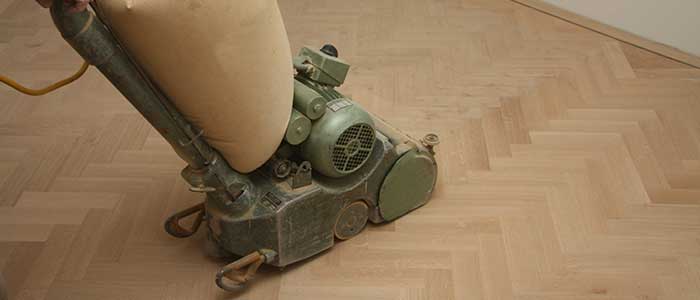Wood floor sanding and refinishing work is one of the most challenging and trickiest, sometimes even for experienced and knowledgeable professionals and contractors. There are many things that have to be considered before starting such a project and the main problems don’t come when something wrong happens, but when something wrong happens and we don’t know how to deal with it. Mistakes are something that everyone faces in their job at some point and because of that previous experience and knowledge are important.
Today we will talk about a common sanding mistake – dreaded swirl marks that appear because of poorly done wood floor sanding job that appears when the finish and stain are already applied… or when is way too late and all the job has to be re-done.
Why do swirl marks happen?
Here are some of the most common mistakes that cause them:
Too aggressive of a grit
Using too aggressive grit means that you take the risk of deep gouges or scratches appearing that are quite noticeable. The same issue can happen when the proper grit sequence is not followed.
Screening too fast
Sanding, buffing and screening are delicate jobs that require attention to detail, although it looks like a raw and messy job. Going too fast means that you do not allow the machine and sandpaper to do their job properly.
Debris under the screen
As we have mentioned many times, the floor has to be completely clean before starting with the sanding project. Otherwise, the debris can be pushed around by the buffer and create dramatic swirl marks or scratches. Otherwise, the debris can clog the sander and once again cause ineffective sanding.
The machine is not balanced
When the buffer is not balanced, it will lean to one side and sandpaper can create a gouge mark.
The finish is not dry enough to be screened
Who has told you that sanding and refinishing are a quick job? Waiting is required in many steps of the process for perfect final results. For example, the finish has to be completely dry before starting with screening. Waiting two to three hours between coats is normally enough.
The floor is not even
If the surface of the floor is not even, then the buffer won’t perform properly and when it runs over highs and lows, it will create a different scratch pattern.
The finish is not clean
If there is any debris left in the end, you will suffer the same effect, when the floor is not completely clean before starting with the initial sanding process.
How to prevent swirl marks?
- Know what the appropriate sanding pad or screen is for each situation and each step of the sanding process.
- Work and move slow and steady.
- Make sure the buffer is steady and not leaning on one side.
- Clock the buffer. Run the buffer parallel to the grain.
- Vacuum and clean perfectly, when starting and also in between the stages.
- Do not use damaged screens and paper.

Be the first to comment on this post.